Back in the days, not so long ago, Hindu weddings were traditionally ”Arranged Marriages” where the elders, decided and approved who gets married, when and to whom. Usually, a dowry (something of value or money) is offered to he groom’s family.
Now Hindus are love marriages, one of the most colourful and musical and full-of-charm-and-charisma kind of weddings. The Hindus, Muslims and Christians have different wedding traditions and customs. However, similarities exist, and over the years, some religions have even adopted some customs from others. So let’s begin.
Tip: Dulahin- bride, Dulaha- groom
The Hindu wedding includes a variety of events, like the “Maticore” on Friday which is a cleansing ritual for both the bride and groom and is done at their separate homes.
Maticoor night is an important zone of female empowerment. The almost exclusively female-centred ritual is meant to instruct the Dulahin (bride to be) on sexual matters through humour, dance song and role – play. It was in this zone that Hindu women throughout the centuries found a safe haven where they could express themselves without the prying eyes of men, pass on valuable traditions from mother to daughter and be free to be sensual, ribald and spicy without judgment or censure. This night is composed of three parts, the Maticoor, a ritual performed in an area of clean earth with clear running water, the Saffran/ Saffron, a ceremony where the bride to be is purified and adorned by the youngest female of the gathering and the application of Mehendi, where the Dulahin’s hands and feet are adorned with henna to enhance and celebrate her beauty. This night is a time of celebration and togetherness that highlights the importance of family and of the traditions of women.
When the procession stops at a place of rich earth, near running water, the tray is placed on the earth and the flambeau/candle is placed beside it. A woman digs the earth and places some of the loose earth on the tray. At this point sindoor is to be placed on the heads of the five married women and sweets are to be shared amongst the guests. At this point the dancing begins in earnest. The women wine and gyrate much to the delight of the other guests. Other women are invited to participate but the men are not under any circumstances allowed to dance at this time. The tray is placed once again on the child’s head and the procession returns to the Dulahin’s house.
The Maticoor ceremony begins with a ritual which involves the elder married women and the youngest girl of the household. The baghie, an altar where the puja will be performed is located inside the house and next to it is placed the ceremonial tray of hardie, sindoor, diya, lota and traditional sweets. The tray is then lifted by five elder, married women and placed upon the head of a young unmarried girl. The girl is then responsible for carrying the tray to the site outdoors where the actual Maticoor ceremony will be performed. A young girl is chosen because of her youth, innocence and purity.
The young girl leads the procession to the designated area, followed closely by the married women, one of whom carries a hoe to dig the earth and another one carries the flambeau/candle. Traditionally, lively Tassa drumming leads the procession. Despite the fact that on this night males were allowed to be present, they were far fewer than the females. Traditionally only women, family and friends of the Dulahin, were allowed to attend this ceremony. The party rejoins the bride at the house and the dancing continues. At this time the ceremony takes on a real party atmosphere with more women, young and old joining in on the dancing. Younger males and boys also join in at will. One female relative places a pillow under her dress and pretends to be pregnant, signifying the sexual act and the expected offspring that will result.
Saturday night is cook night
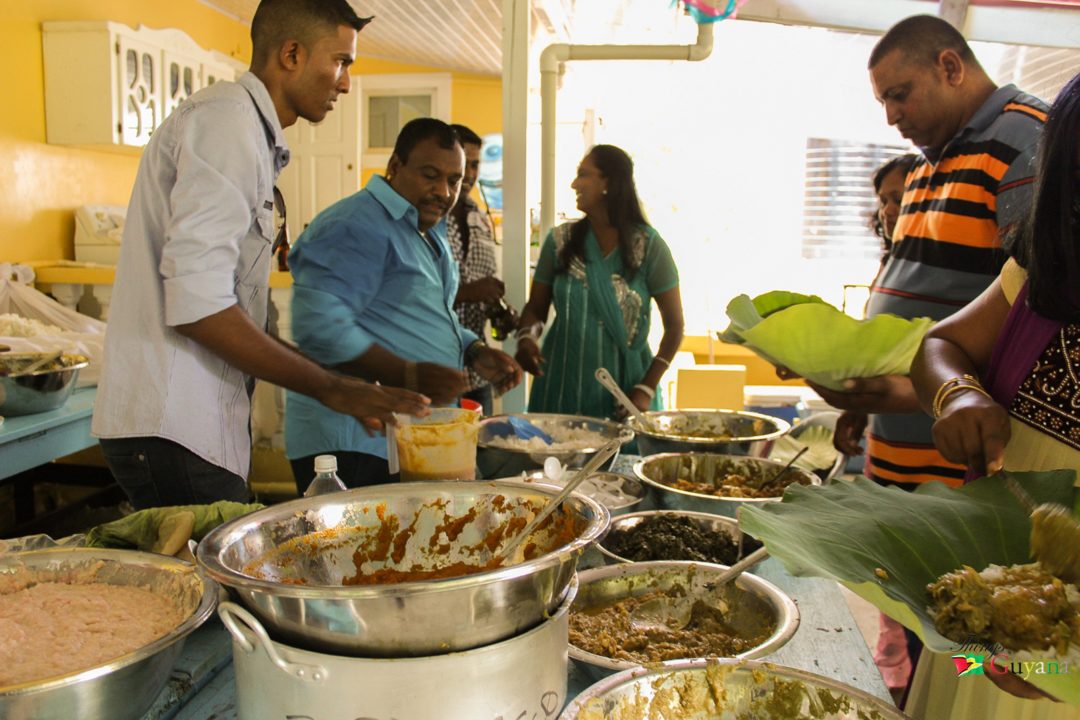
Don’t forget how much work is needed for 7 Curry (The wedding house food consisting of seven different kinds of curry)
On this night all friends and family come over and help prepare stuff for the big day. Assisting with the gathering of ingredients and vegetables necessary for the wedding day. Whilst doing this they prepare sweet meats.
During this moment they “gafff” a lot as we call it and get work done.
Wedding day!
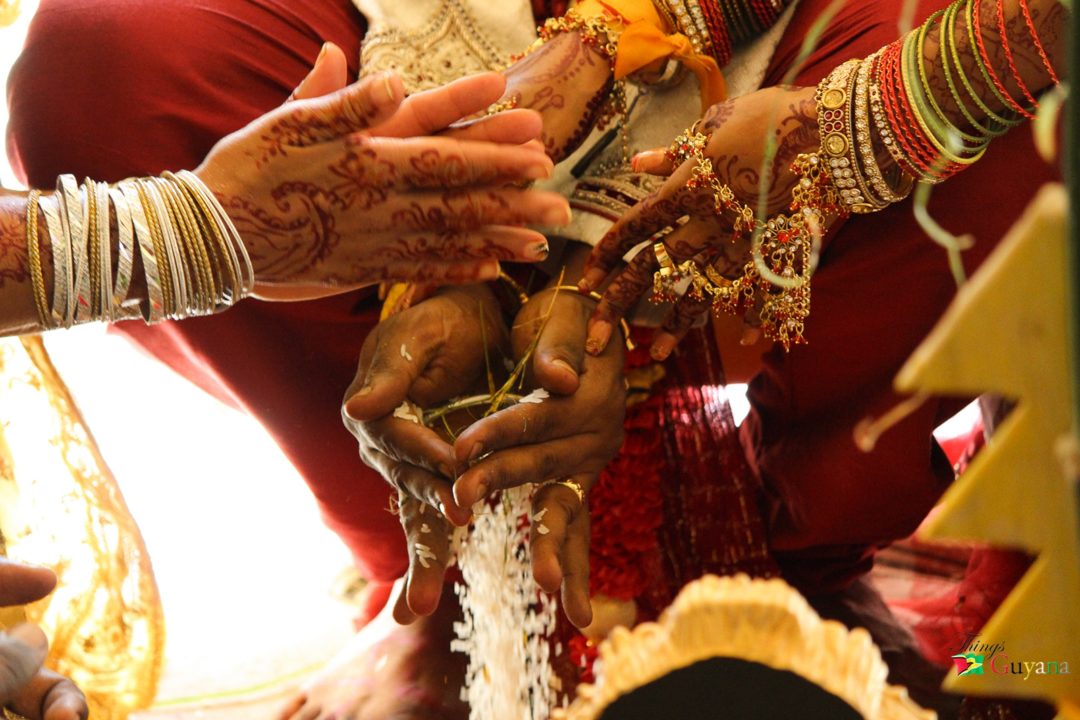
The Wedding Ceremony
A Hindu wedding is Vivaha and the wedding ceremony is called Vivaah Sanskar in North India and Kalyanam. The bride and groom are next seated in front of a holy fire, or agni, as a priest recites various mantras from the Holy Scriptures. In Hinduism, fire is regarded as a purifier and a sustainer of life. In a ritual called mangalfera, the bride and groom walk around the fire four times (each a symbol of the four ashrams of life), praying and exchanging vows of duty, love, fidelity, and respect. The priest directs family members to make offerings into the fire. At the end of the ceremony, in a ritual called saptapadi, the bride and groom take seven vows, sealing the marriage forever. These vows are traditionally spoken in Sanskrit, and are one of the most ancient aspects of the Hindu ceremony. The vows validate the marriage,no ceremony is complete without them.
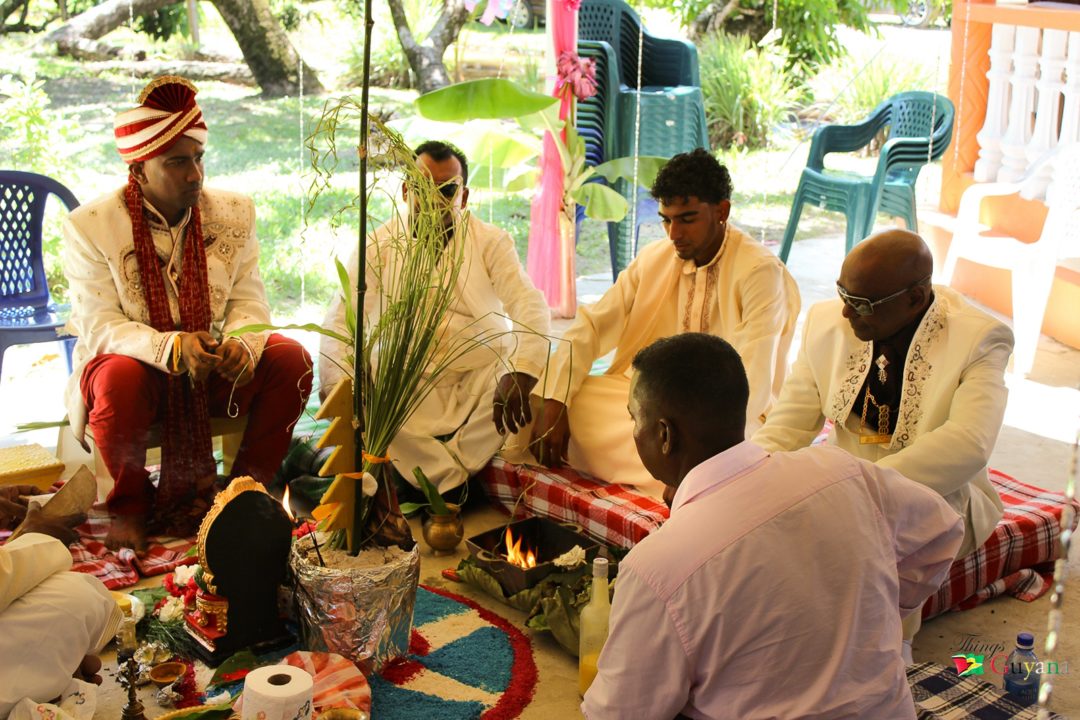
The wedding ceremony
The father of the bride then gives her away to the groom in a ceremony known as Kanyadaan. The left hand of the bride is placed on the groom’s right hand and the bride’s parents utter the following words while giving her away ‘Today, the bride is Lena and the groom is Dev . By joining their hands in marriage, we will repay the debt to our forefathers by continuing the next life cycle.’
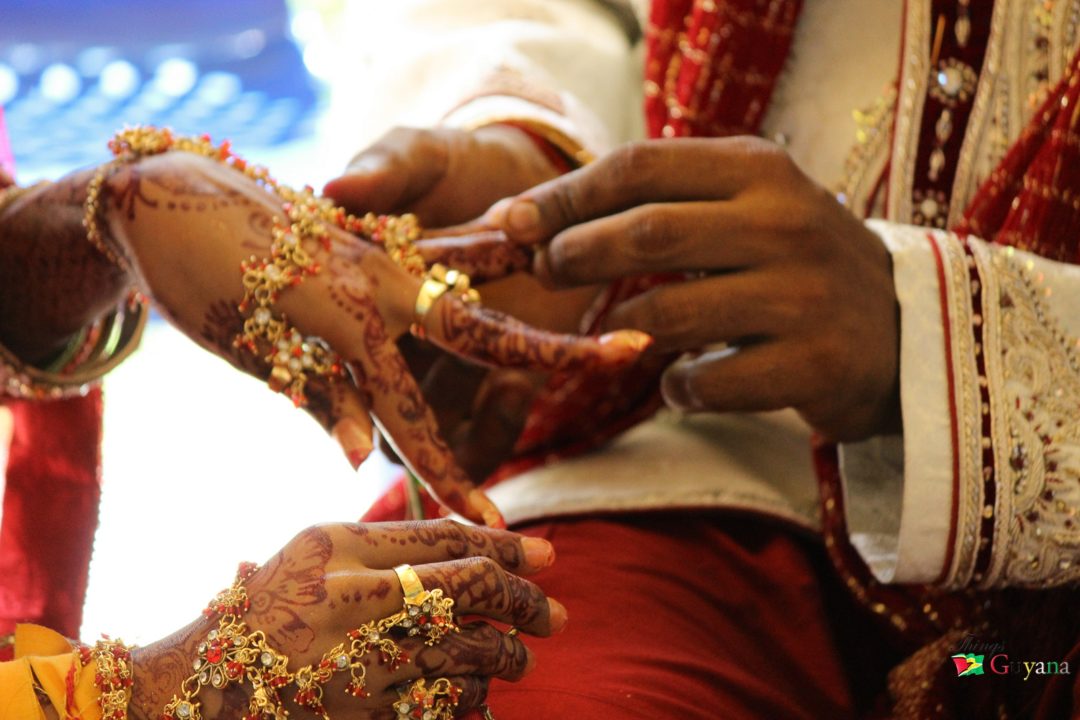
The ring exchange
Kanyadaan is considered to be the noblest act of offering that a person can perform and by doing it the parents of the bride are absolved of all their bad karmas. The groom accepts the bride’s hand and they promise each other that while pursuing a life of Dharma, Artha and Kama, they will remain faithful to each other. This is known as Paanigrahan. Then as father gives away the bride,The post wedding rituals begin, welcoming of the bride at the groom’s house and reception. During the Vidaai ceremony the family of the bride gives her an emotional send-off and the bride throws back three handfuls of rice and coin over her shoulders to signify end of her debt to her parents for nurturing her and wishing the arrival at the groom’s house, the new couple is welcomed by the groom’s mother, with a traditional aarti.
The bride enters her in-laws house by displacing a container filled with rice signifying that she is the bringer of abundance to her new family. She then dips her feet in a mixture of red vermillion and enters the house, leaving foot prints on the floor. This ritual is practiced as the bride is considered as a form of Goddess Laxmi. After this, a number of wedding games are played to make the bride comfortable.
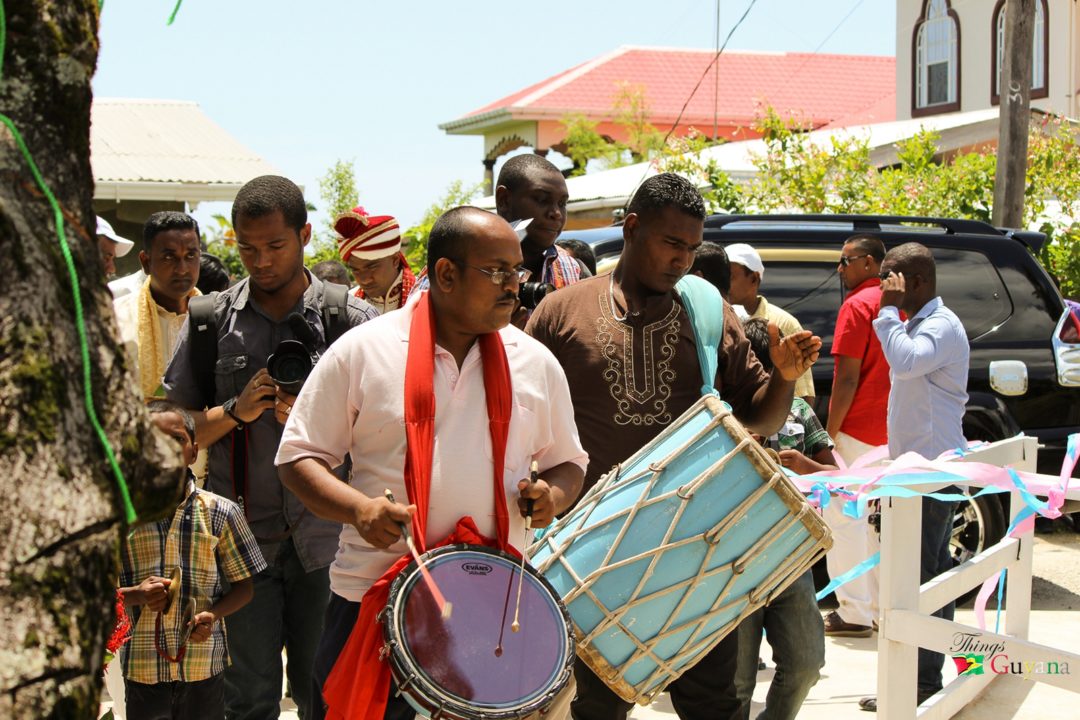
It is common to see Tassa Drummers at all Hindu weddings in Guyana.
A reception is either organized by the bride’s family after the wedding rituals have been completed to feed guest and get them to bless the couple. Or in some cultures it is arranged by the groom’s family after the bride has arrived from her paternal home.
Article references
- http://www.triniview.com/Hindu_Wedding/151206.html
- https://www.theknot.com/content/amphtml/hindu-wedding-guest-qa
- https://www.culturalindia.net/amp/weddings/regional-weddings/hindu-wedding.html







